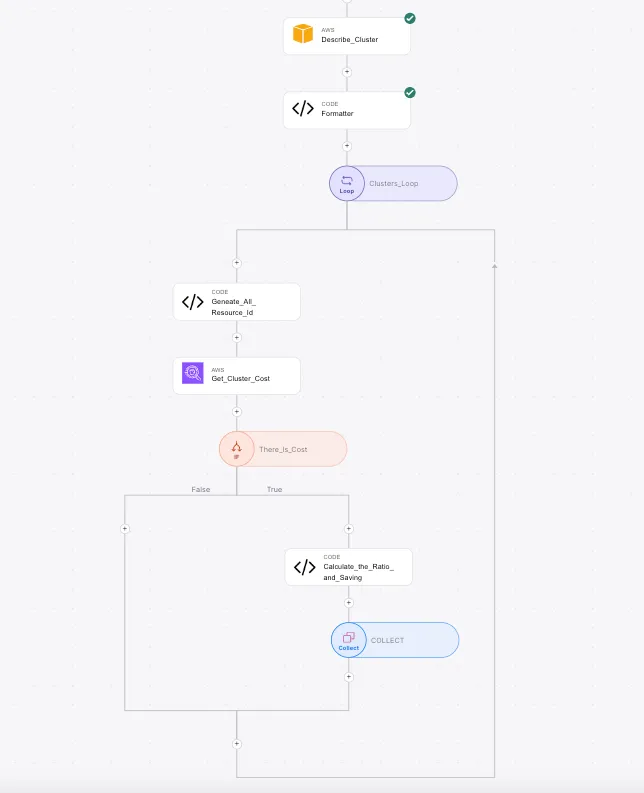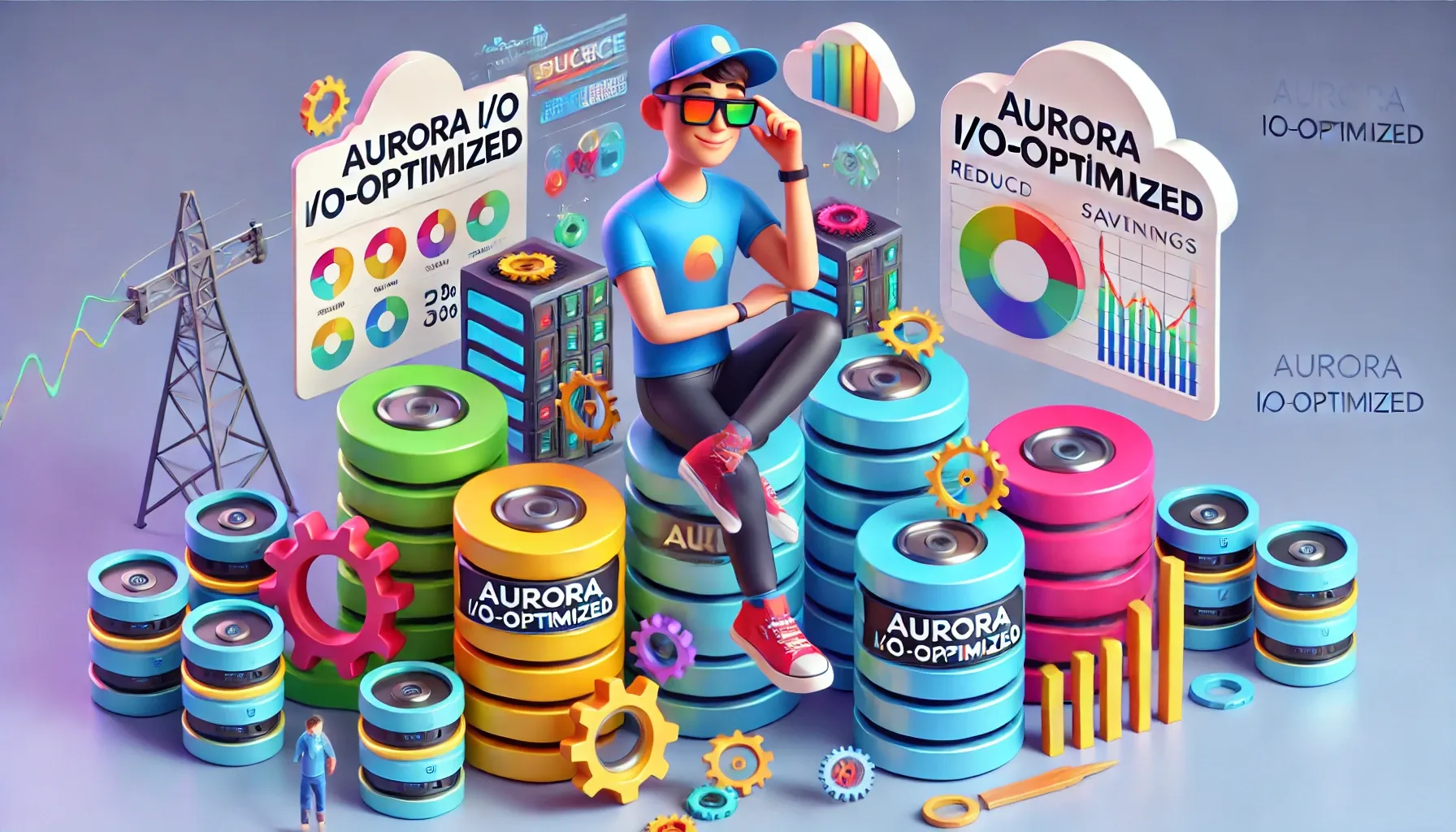In the ever-evolving landscape of cloud computing, database management remains a critical challenge for businesses of all sizes. Today, we’re diving into a game-changing development in this space: Amazon Aurora I/O-Optimized.
But more importantly, we’ll explore why this new feature, while powerful, isn’t a silver bullet — and how automation is the key to unlocking its full potential.
The IOPS Enigma: A Long-Standing Challenge
In many cases, IOPS charges can exceed the cost of the Aurora cluster itself. Yes, you read that right — you might be paying more for IOPS than for the actual database instances and storage. It’s not uncommon to see IOPS costs accounting for 50%, 60%, or even 70% of the total Aurora spend for I/O-intensive workloads.
This situation has been a thorn in the side of CTOs and CFOs alike, making budget forecasting a nightmare and often leading to unexpected cost overruns.
Imagine you’re running an e-commerce platform processing thousands of transactions per minute. Each product view, cart update, and purchase translates to database read and write operations. As your business grows, so do these operations — and their associated costs. The result? Budgeting nightmares and the constant fear of cost overruns.
Enter Aurora I/O-Optimized: A Step in the Right Direction
On May 11, 2023, AWS unveiled Amazon Aurora I/O-Optimized, a new configuration designed to address these IOPS-related challenges. Here’s what makes it noteworthy:
- Zero Charges for I/O Operations: You only pay for database instances and storage usage.
- Predictable Pricing: Easier forecasting of database spend.
- Improved Performance: Increased throughput and reduced latency for demanding workloads.
- Potential for Significant Savings: Up to 40% cost reduction for I/O-intensive applications.
Sounds like a silver bullet, right? Not so fast.
The Hidden Complexity: When and How to Switch?
While Aurora I/O-Optimized is undoubtedly a powerful tool, it introduces a new challenge: determining when and for which clusters to make the switch. The rule of thumb is simple — if IOPS charges exceed 25% of your total Aurora spend for a cluster, switching could save you up to 40%. But in practice, this calculation is far from straightforward:
- Data Aggregation: Gathering cost data across all the resources in the clusters. This includes not just the primary instances, but also read replicas and storage volumes. Each of these components contributes to the overall cost and IOPS usage, making the aggregation process complex.
- Granular Analysis: Separating I/O costs from other charges for each cluster. This requires diving deep into the billing data to isolate IOPS charges from compute, storage, and other costs.
- IOPS Cost Association: A significant challenge lies in associating IOPS costs with specific clusters. In the Cost and Usage Report (CUR), IOPS costs are linked to a cluster ID that is a generated UUID, not the actual cluster identifier you’re familiar with. This necessitates additional API calls and data processing to map these costs back to your actual Aurora clusters, adding another layer of complexity to the analysis.
- Continuous Monitoring: Usage patterns change over time, requiring ongoing analysis. What might be cost-effective today could change tomorrow as your application’s demands evolve.
- Scale Complexity: As your database fleet grows, the complexity increases exponentially. Imagine performing this analysis across dozens or even hundreds of clusters, each with its own unique usage patterns and cost structures.
For a company managing hundreds of Aurora clusters, manually performing these calculations becomes not just time-consuming, but practically impossible.
The Automation Imperative
This is where the true value of automation shines. An intelligent, automated system can:
- Continuously monitor all Aurora clusters
- Perform complex calculations in real-time
- Identify clusters that would benefit from switching to I/O-Optimized
- Implement changes automatically (with appropriate approvals)
- Track the impact of changes over time
However not all automation solutions are created equal.
Why Wiv? Tailored FinOps Automation with Hundreds of Pre-defined Templates
Wiv’s solution stands out by addressing these challenges head-on:
When it comes to optimizing costs for Amazon Aurora, particularly with the new I/O-Optimized option, Wiv stands out as a game-changing solution. Here are three key reasons why:
- No-Code/Low-Code Platform with AI: Wiv’s AI-powered platform enables anyone to create tailored Aurora cost optimization workflows without coding expertise. Financial analysts, DBAs, or cloud architects can all design sophisticated strategies, democratizing FinOps automation.
- Hundreds of Ready-to-Use Templates: Wiv offers a vast library of pre-built templates, including ones specific to Aurora cost optimization. For the I/O-Optimized use case, you can quickly scan all your Aurora clusters across your infrastructure, identifying saving opportunities in minutes, not weeks.
- Human-in-the-Loop Implementation: While automating Aurora optimizations, Wiv maintains human oversight. When the system identifies potential I/O-Optimized configuration switches, it initiates an approval process, routing recommendations to the engineering team. This ensures all technical considerations are accounted for before implementation.

Real-World Impact: Before and After
Let’s consider a mid-sized e-commerce company to illustrate the transformative power of combining Aurora I/O-Optimized with Wiv’s automation:
Before:
- Struggled with unpredictable IOPS charges, often exceeding 30% of total Aurora costs.
- Manual assessment of dozens of Aurora clusters was time-consuming and error-prone.
- Missed optimization opportunities due to the complexity of calculations.
- Engineering team spent significant time on database management rather than core business logic.
After Implementing Aurora I/O-Optimized with Wiv:
- Automatic identification of 15 clusters suitable for I/O-Optimized.
- Seamless transition to the new configuration with zero downtime.
- 35% reduction in overall Aurora costs.
- Continuous monitoring ensuring optimal configuration as usage patterns change.
- Engineering team freed up to focus on innovation and customer experience.
Engineering team freed up to focus on innovation and customer experience.
Amazon Aurora I/O-Optimized is a significant step forward in addressing the longstanding challenge of IOPS costs. However, its true potential is unlocked only when combined with intelligent automation.
Wiv’s solution doesn’t just save you money; it transforms how you manage your infrastructure:
- Effortless Scalability: From startups to enterprises, manage any number of clusters with ease.
- AI-Driven Automation: Stay ahead of the curve with intelligent, automated optimization processes.
- Resource Reallocation: Free up your team to focus on innovation rather than cost management.
In the fast-paced world of cloud computing, manual optimization is no longer feasible. The combination of Aurora I/O-Optimized and Wiv’s automated intelligence offers a powerful solution to one of the most persistent challenges in database management.
Are you ready to take control of your Aurora costs and performance? Discover how Wiv can transform your approach to database management, making cost optimization a seamless, intelligent, and continuous process. The future of database management is here — and it’s automated.






